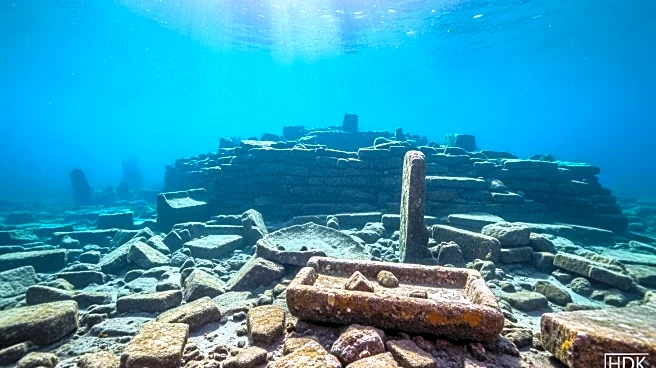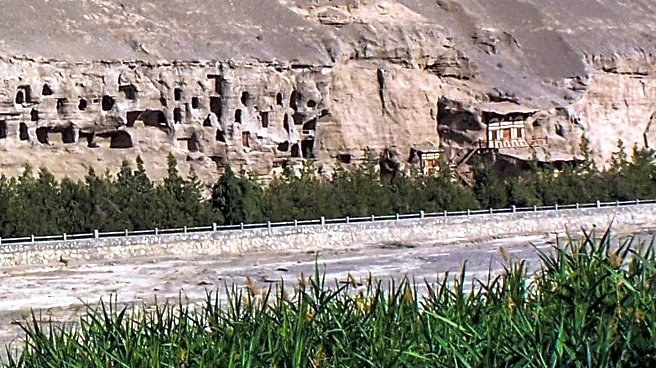What is the story about?
What's Happening?
A monumental dam has been uncovered at the Siloam Pool in the City of David National Park, Jerusalem, dating back to the reigns of Kings Joash or Amaziah of Judah, around 805-795 BCE. This discovery, made by the Israel Antiquities Authority and the Weizmann Institute of Science, reveals a massive structure designed to address water shortages and flash floods during a climate crisis 2,800 years ago. The dam, measuring 12 meters high and over 8 meters wide, was part of a sophisticated water management system that collected water from the Gihon Spring and floodwaters, reflecting advanced urban planning in ancient Jerusalem.
Why It's Important?
The discovery of this ancient dam provides tangible evidence of the Kingdom of Judah's engineering ingenuity and its response to environmental challenges. It highlights the historical significance of water management in urban planning and the ability of ancient societies to adapt to climate conditions. This finding enriches our understanding of Jerusalem's history and the technological capabilities of its inhabitants during the First Temple period. It also underscores the importance of archaeological research in uncovering past human responses to climate change, offering insights that may inform modern strategies.
What's Next?
The discovery opens new avenues for archaeological research in Jerusalem, with potential further excavations to uncover more of the dam and related structures. The integration of scientific dating methods with archaeological findings will continue to provide precise historical insights. This collaboration between scientific and archaeological disciplines may lead to more discoveries that illuminate the history and development of ancient urban centers.
Beyond the Headlines
The dam's discovery emphasizes the role of interdisciplinary research in archaeology, combining advanced scientific techniques with traditional excavation methods. It also highlights the enduring relevance of historical climate adaptation strategies, offering lessons for contemporary efforts to address environmental challenges. The findings contribute to a broader understanding of how ancient societies managed natural resources and infrastructure, reflecting a long-standing human capacity for innovation in the face of adversity.
AI Generated Content
Do you find this article useful?











